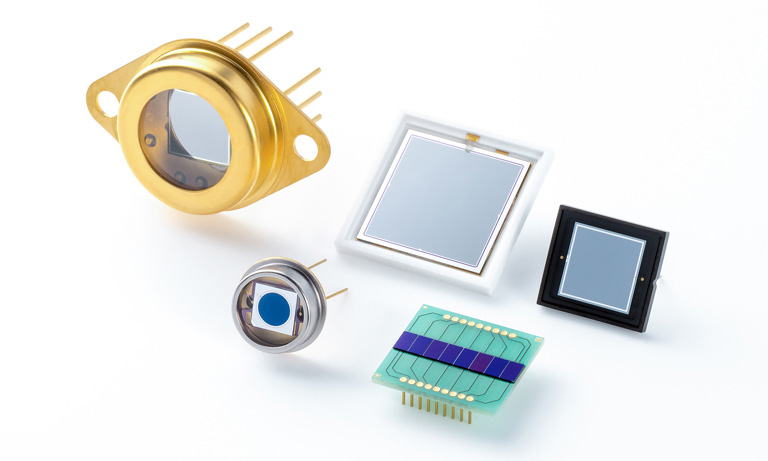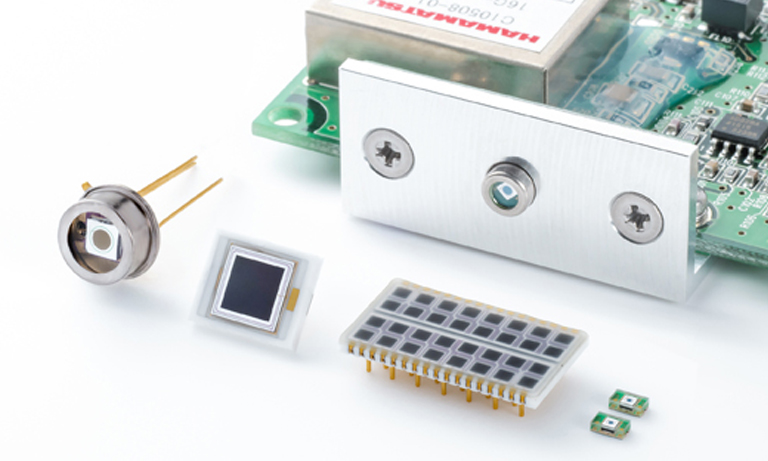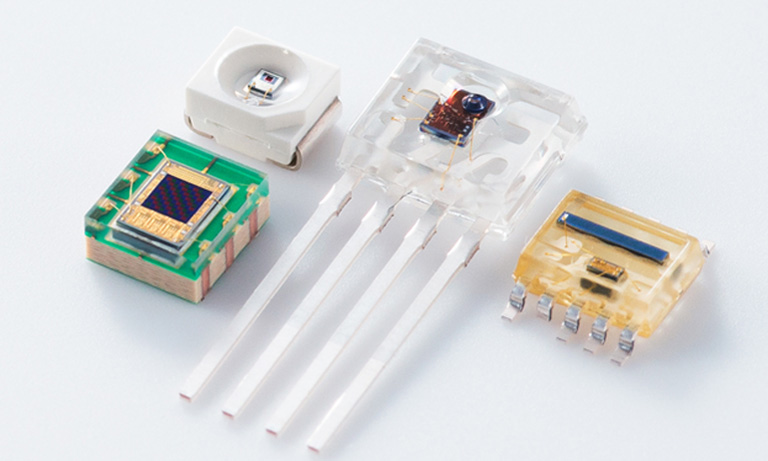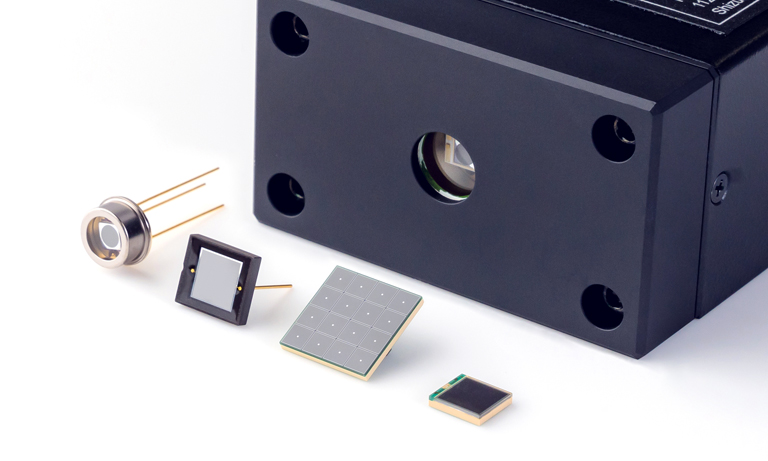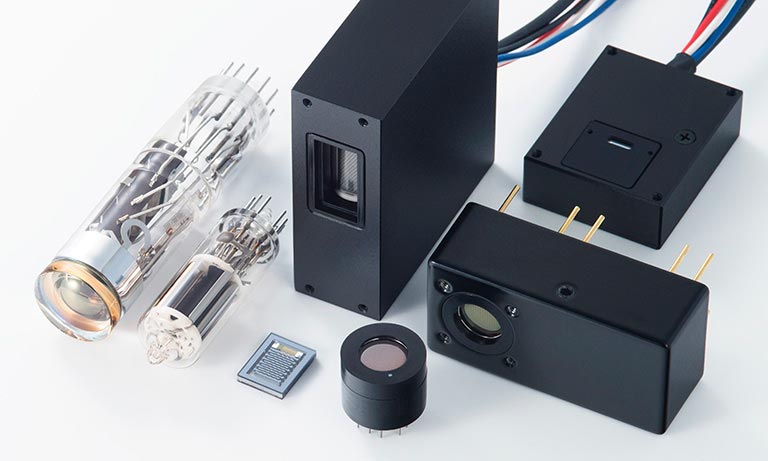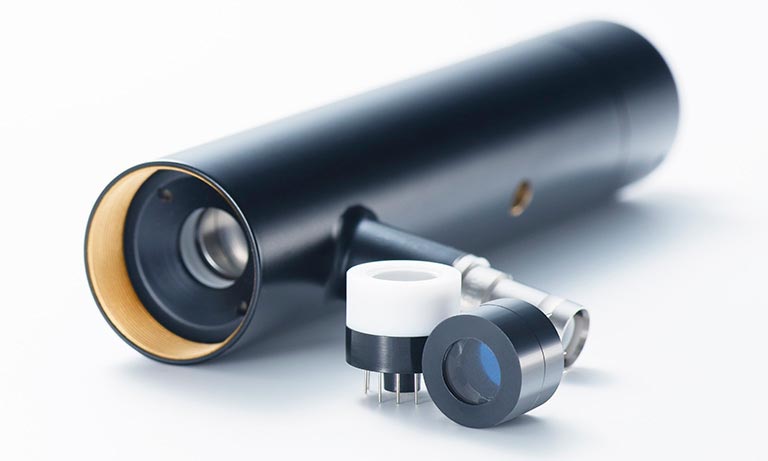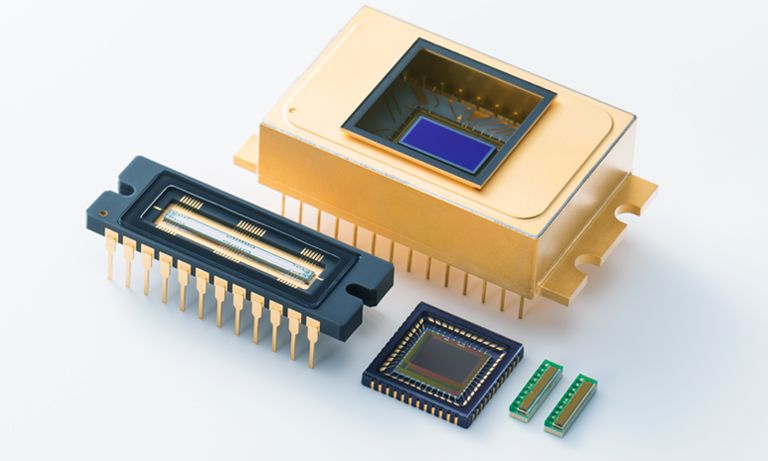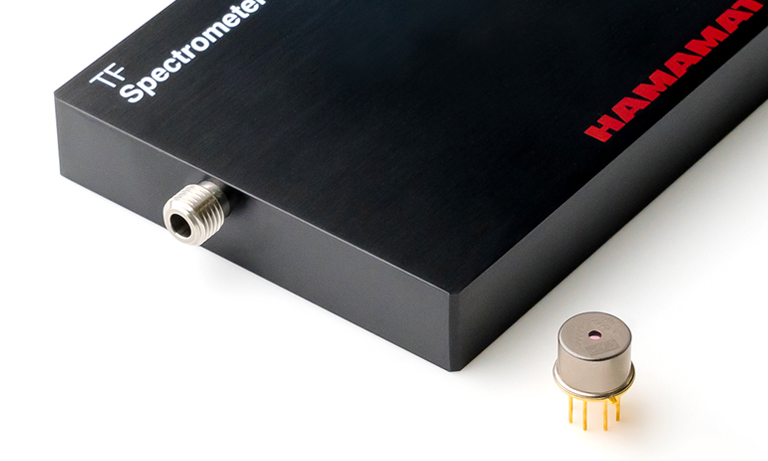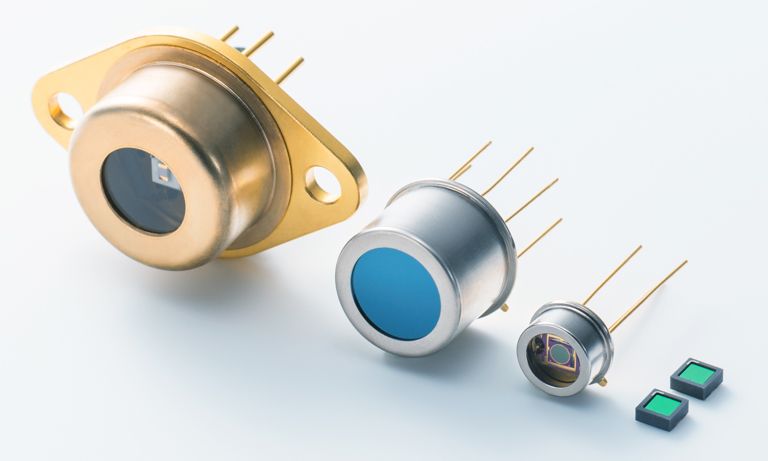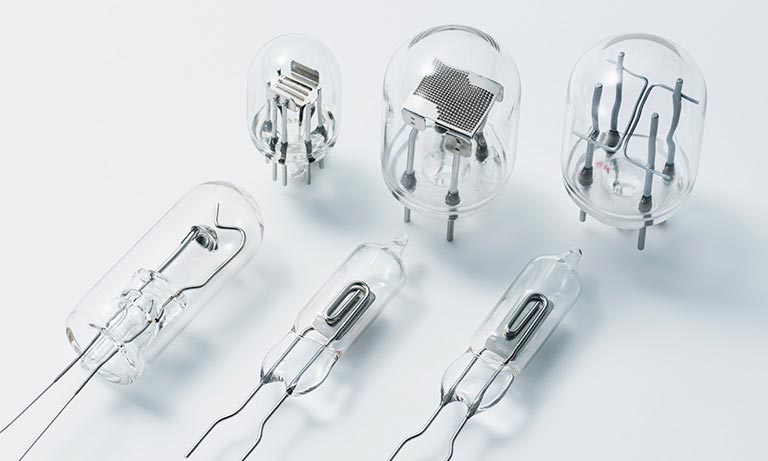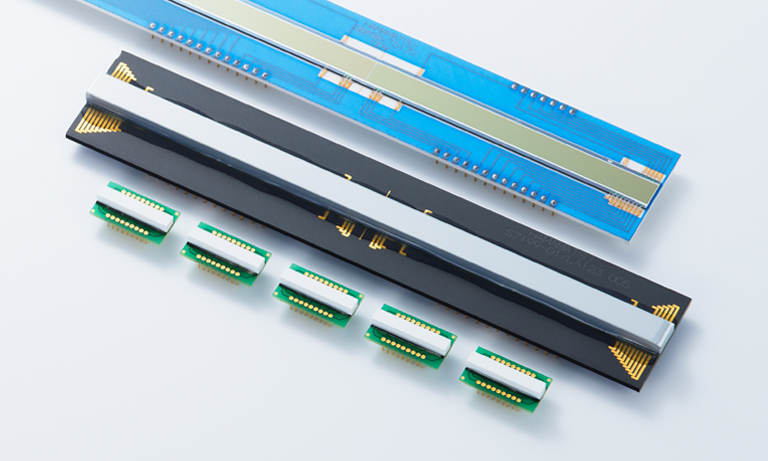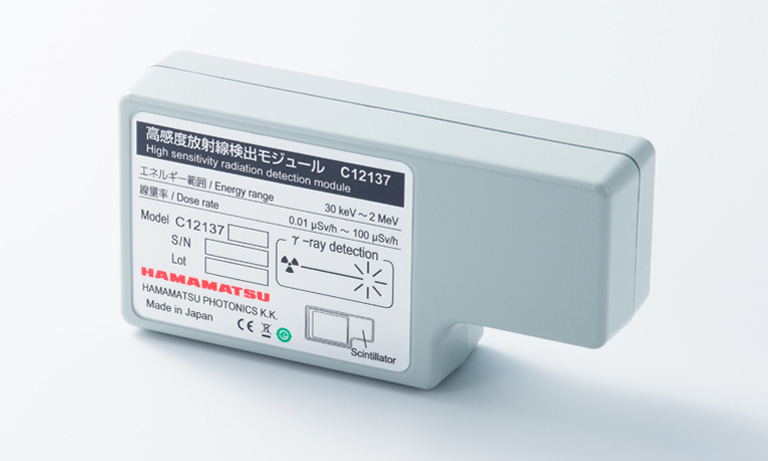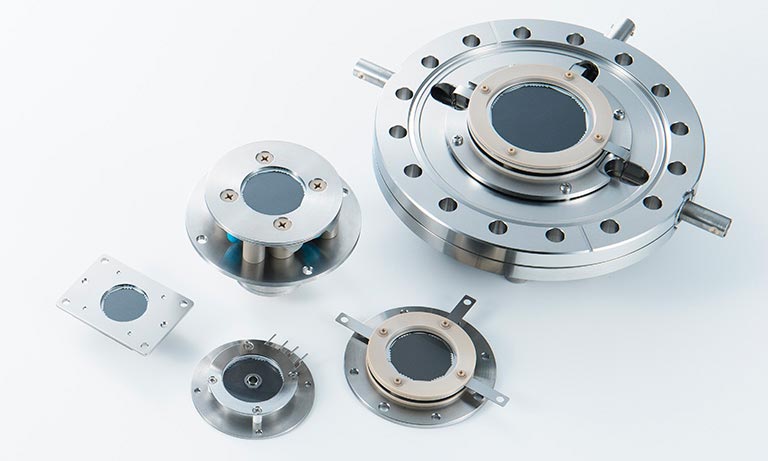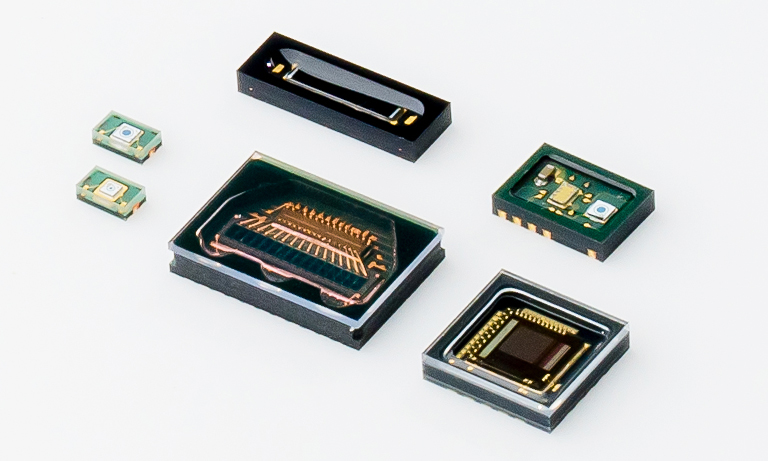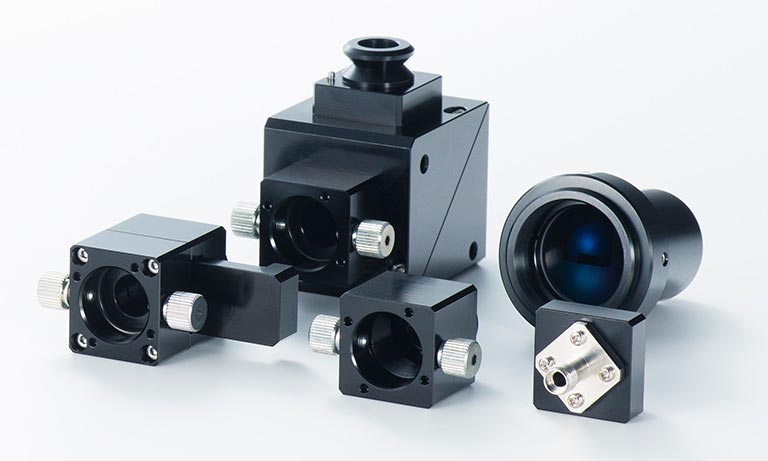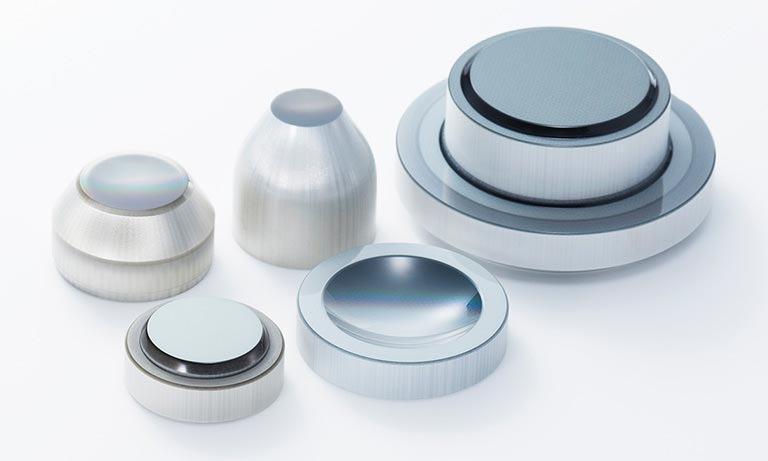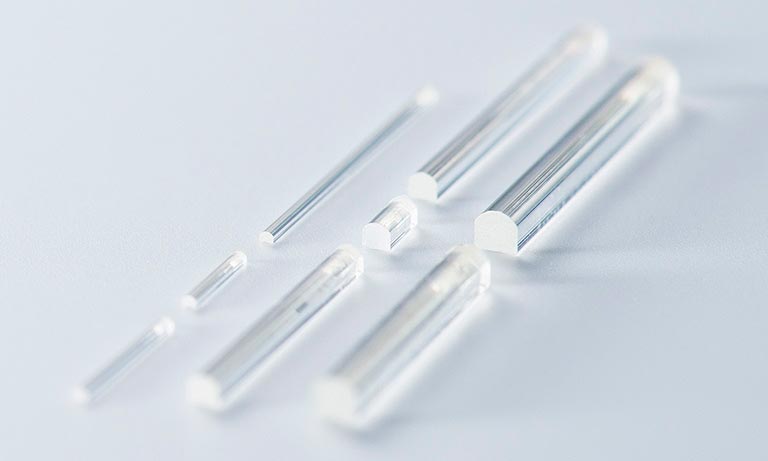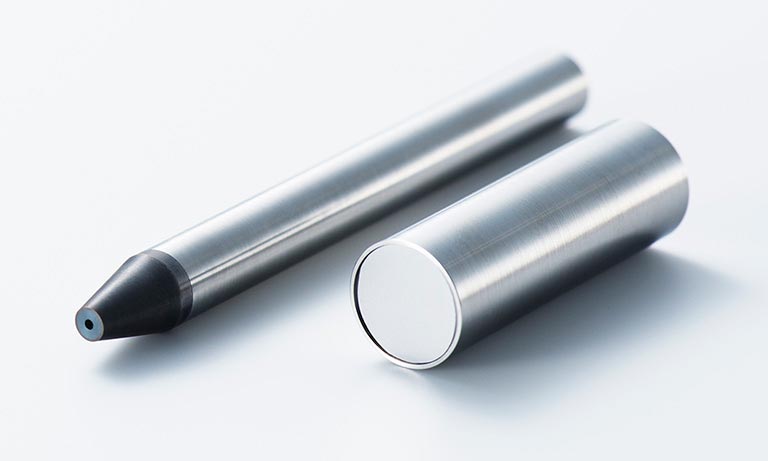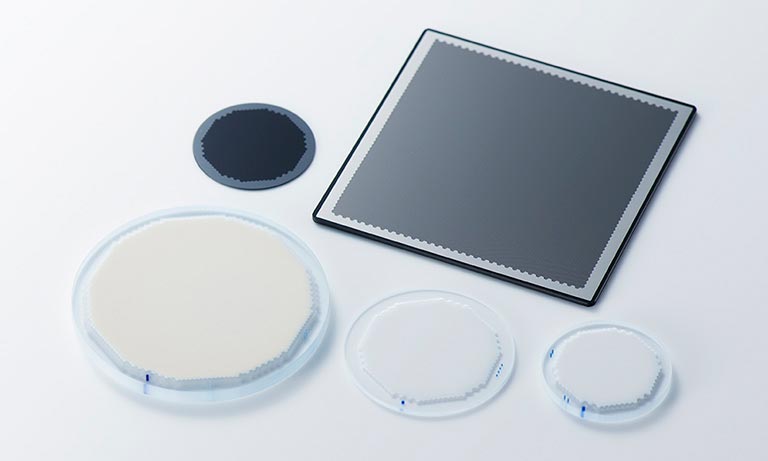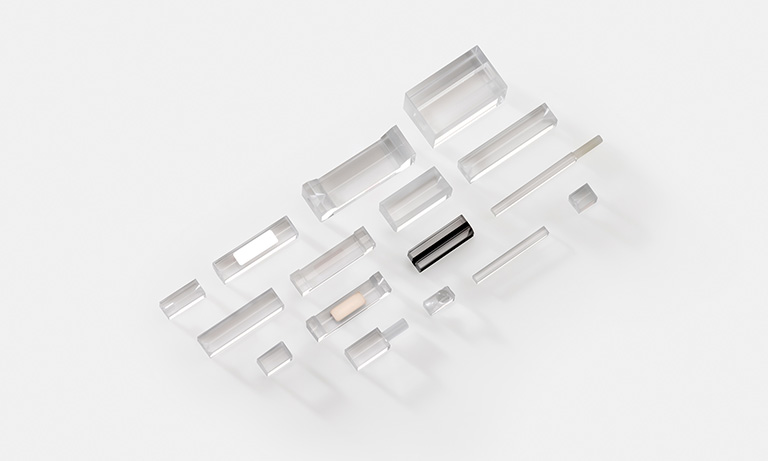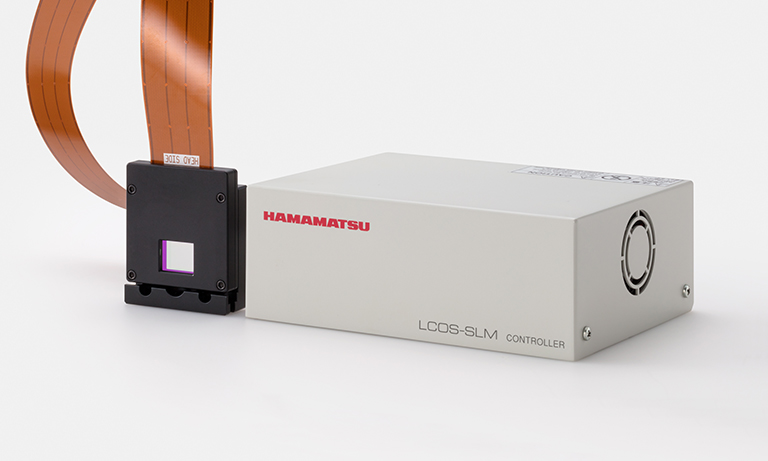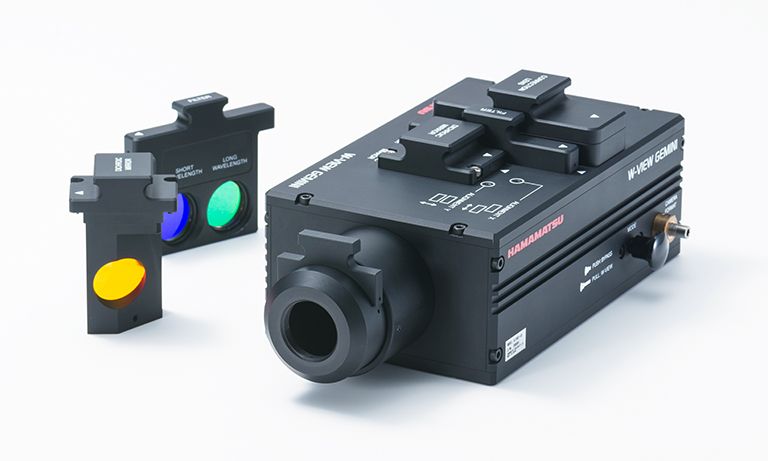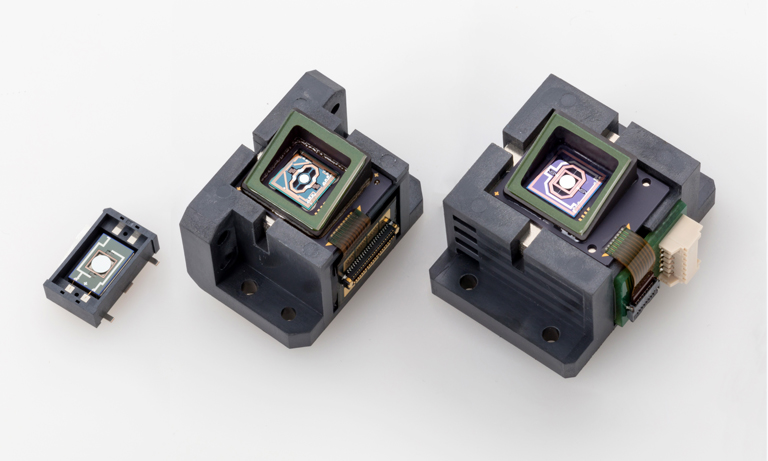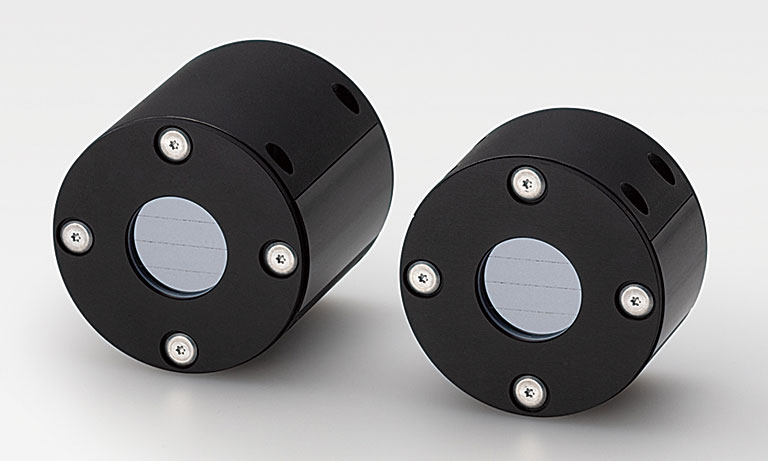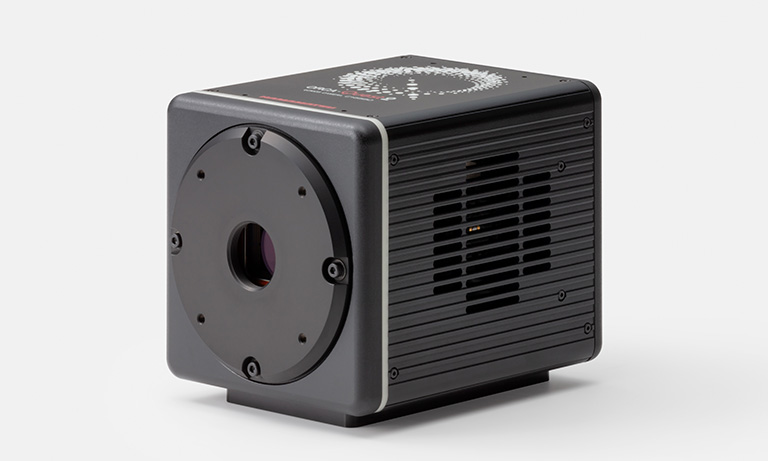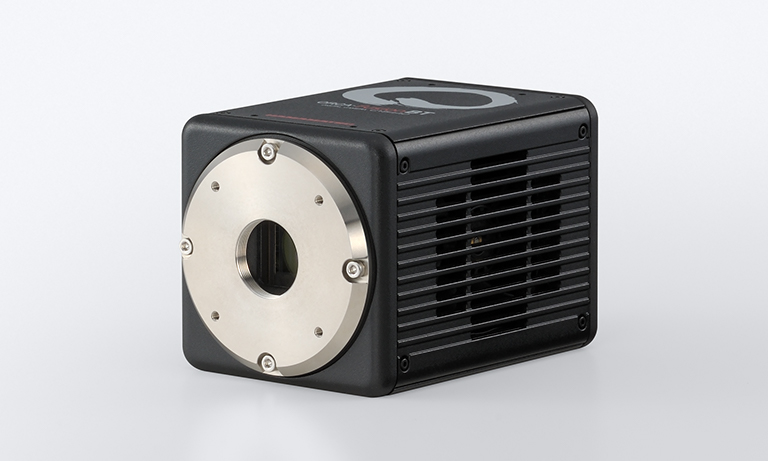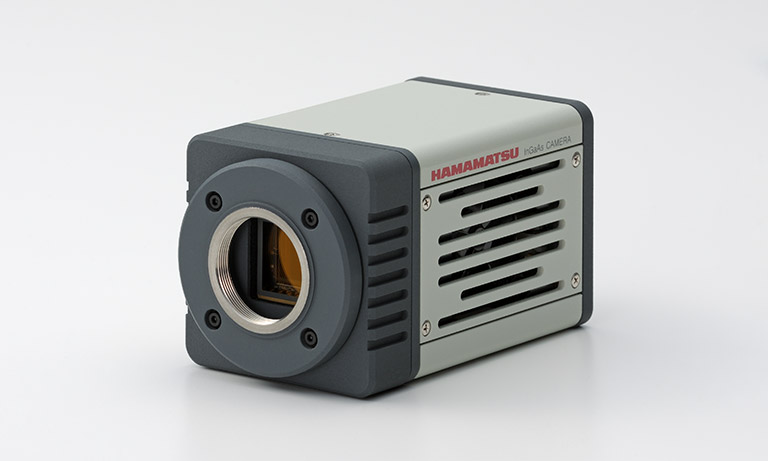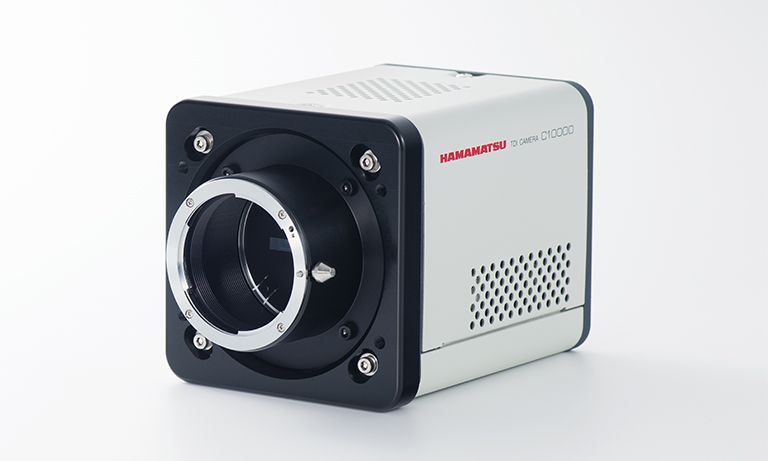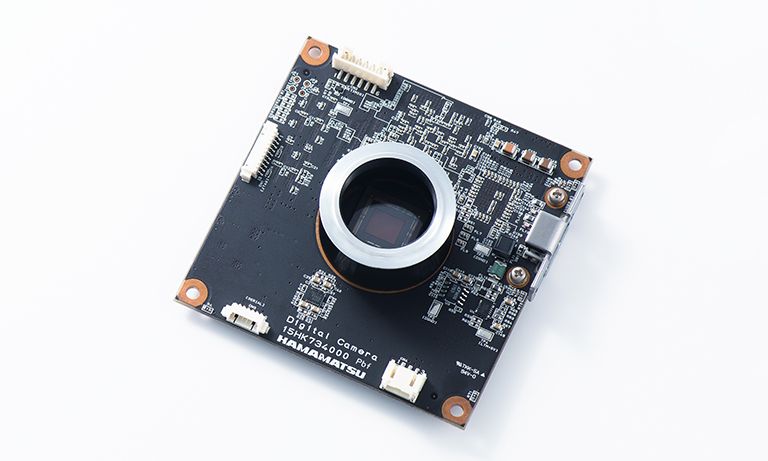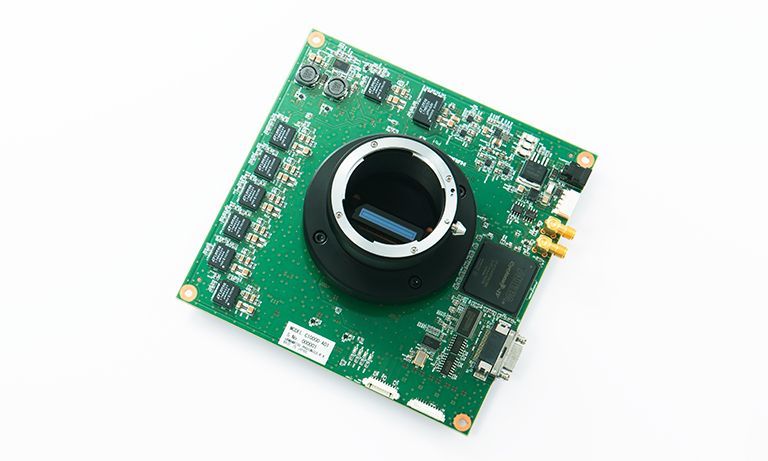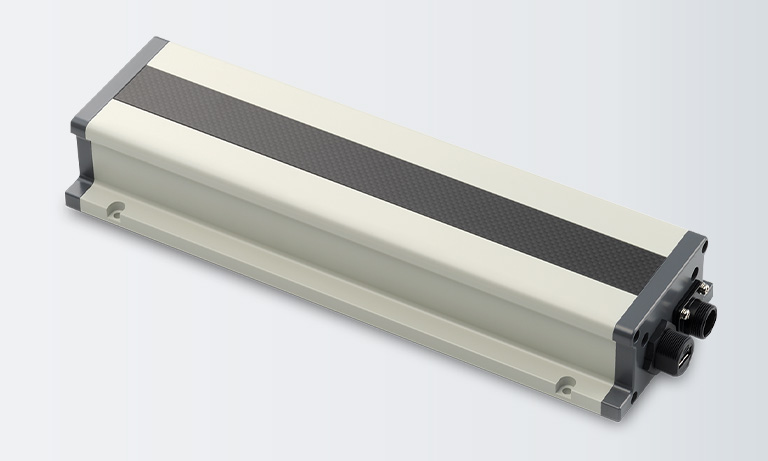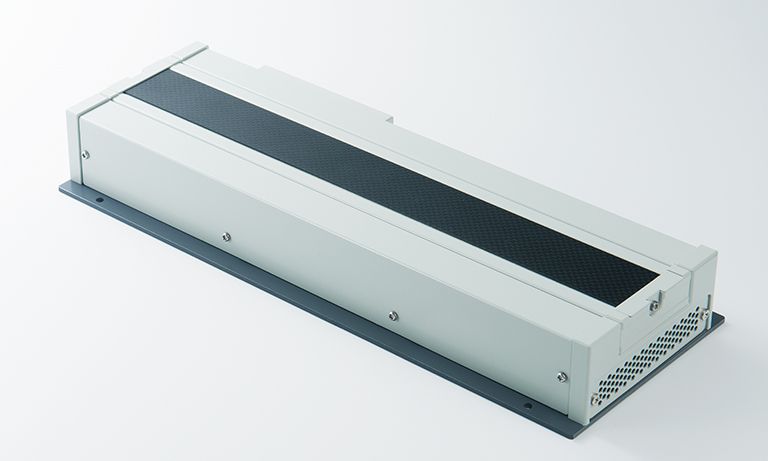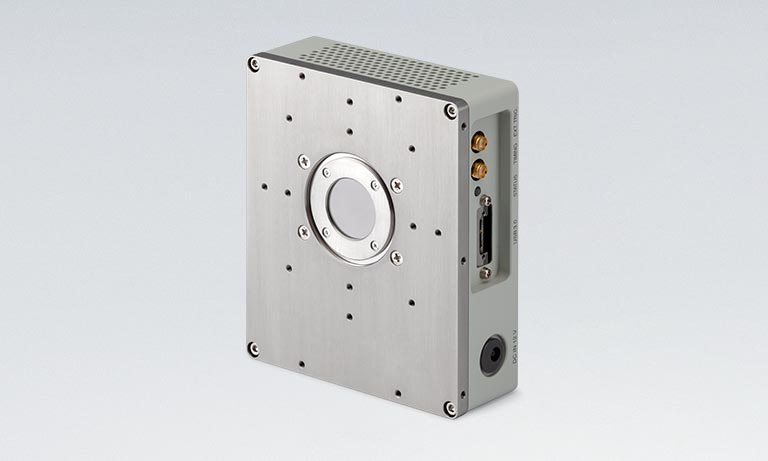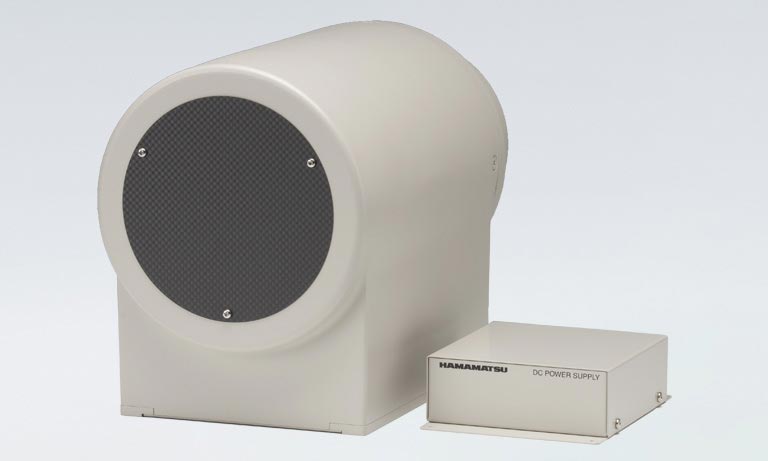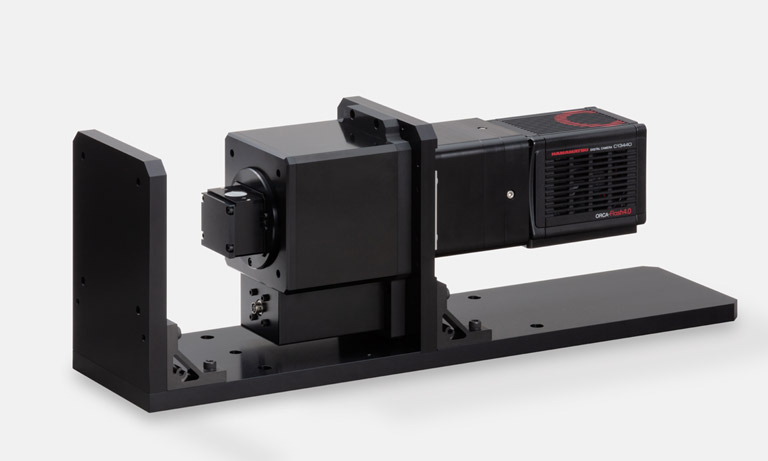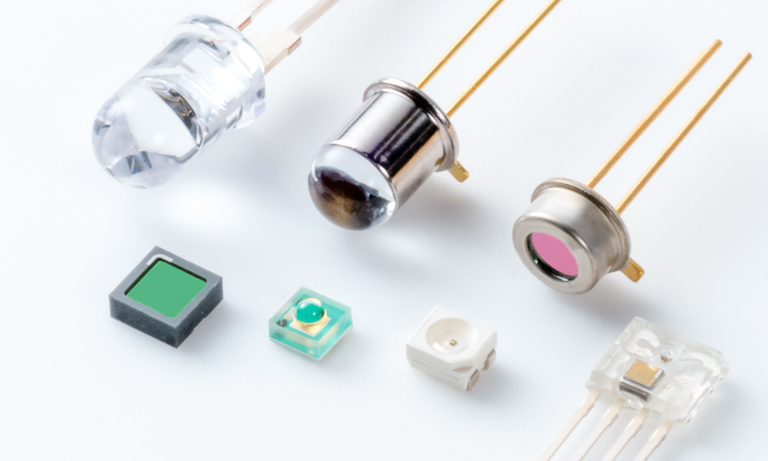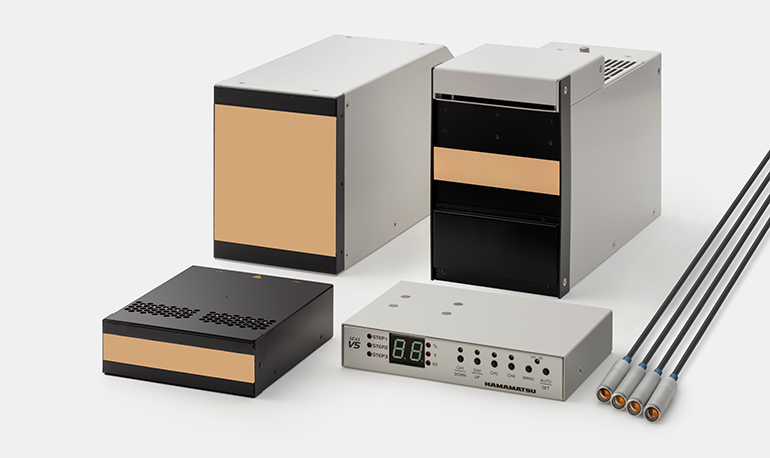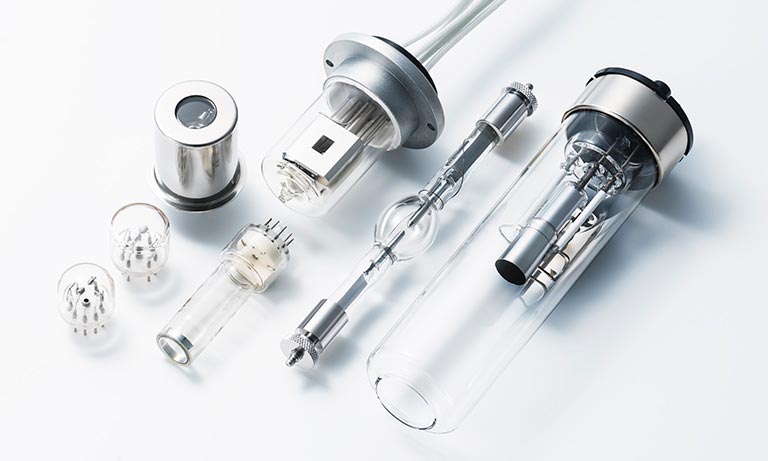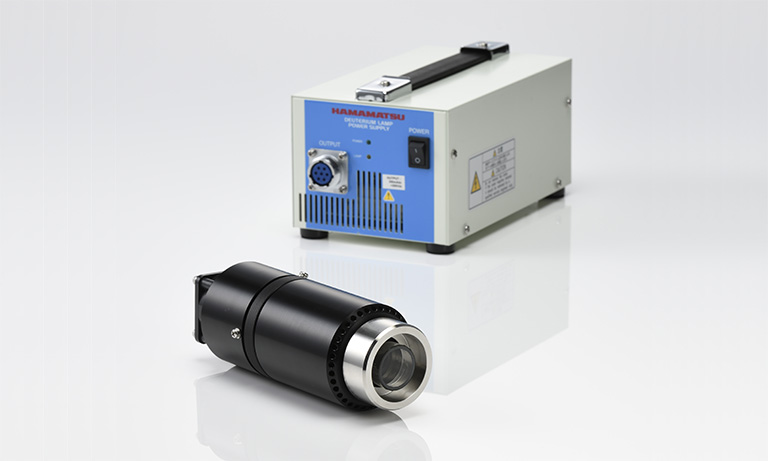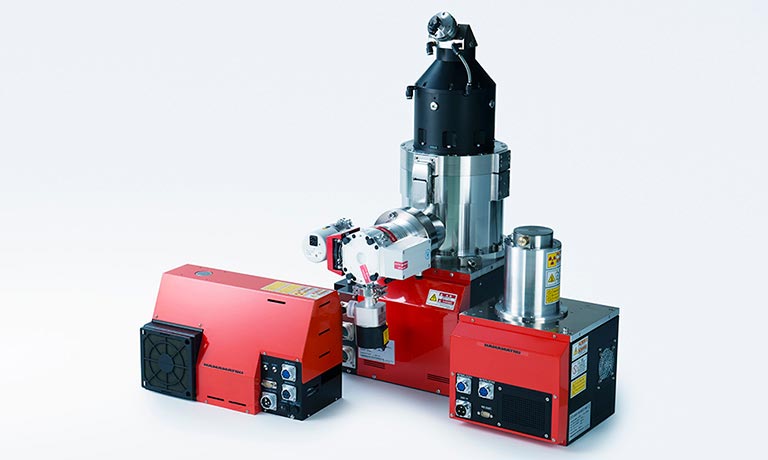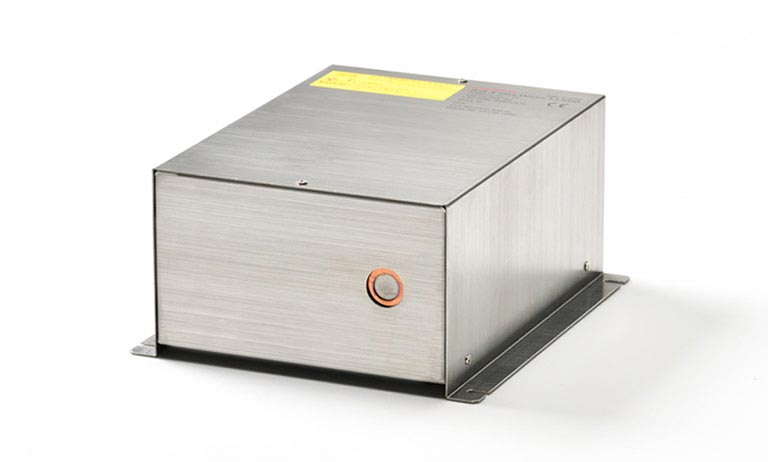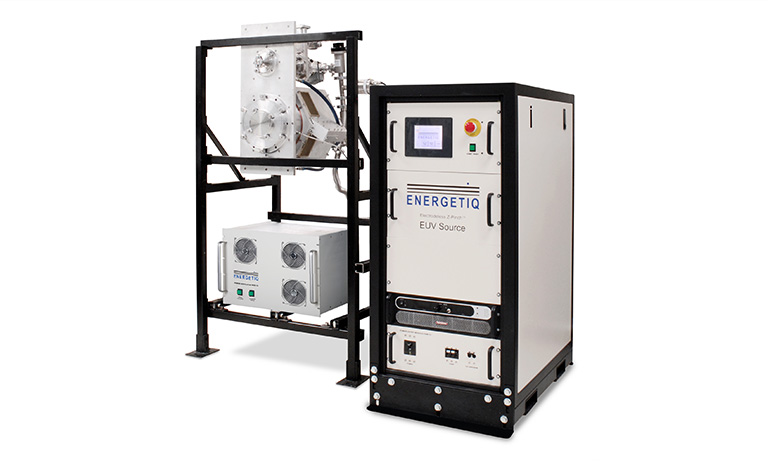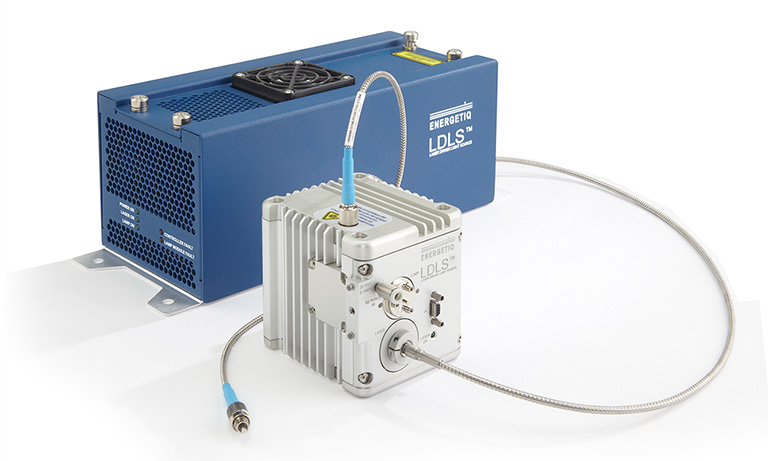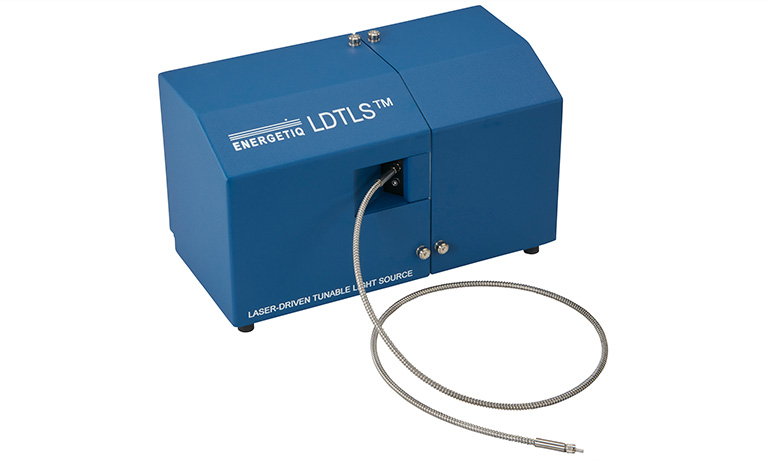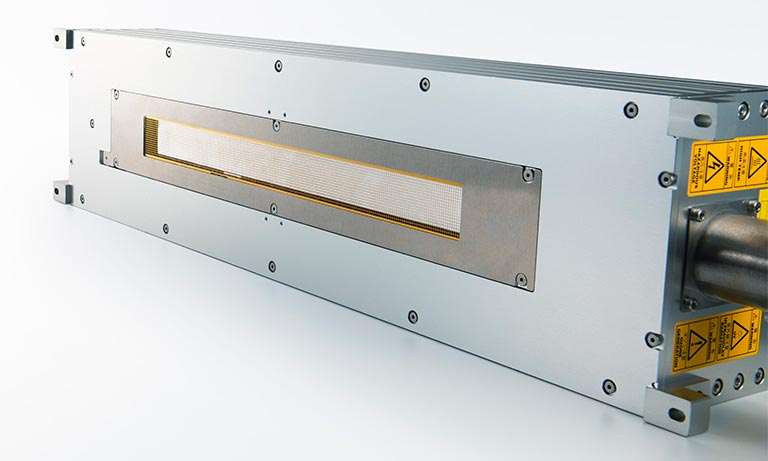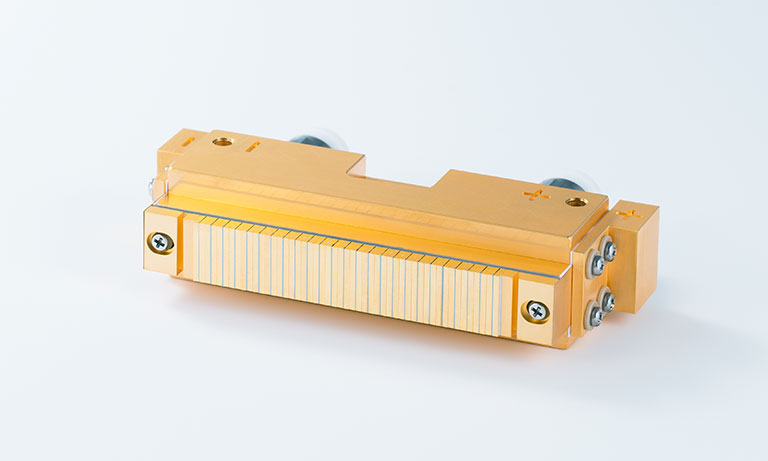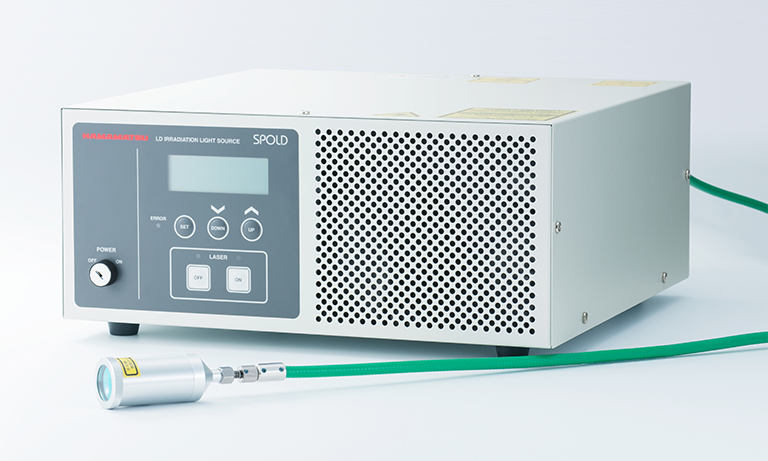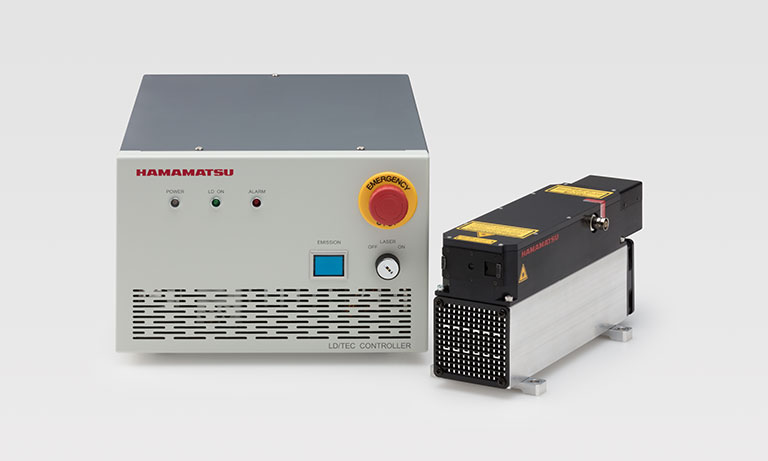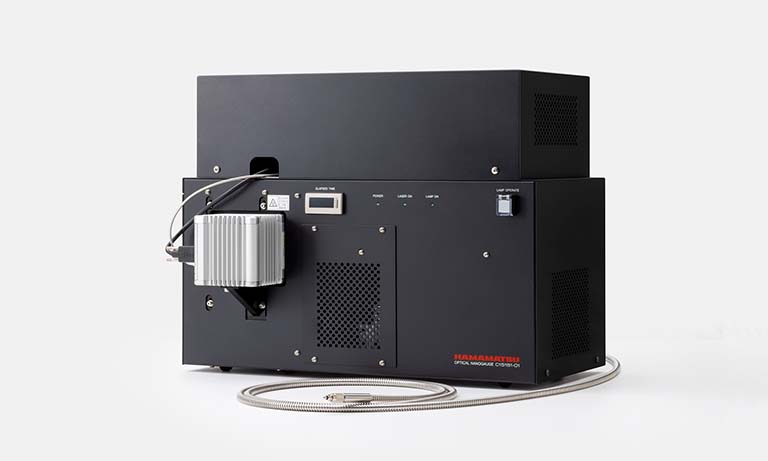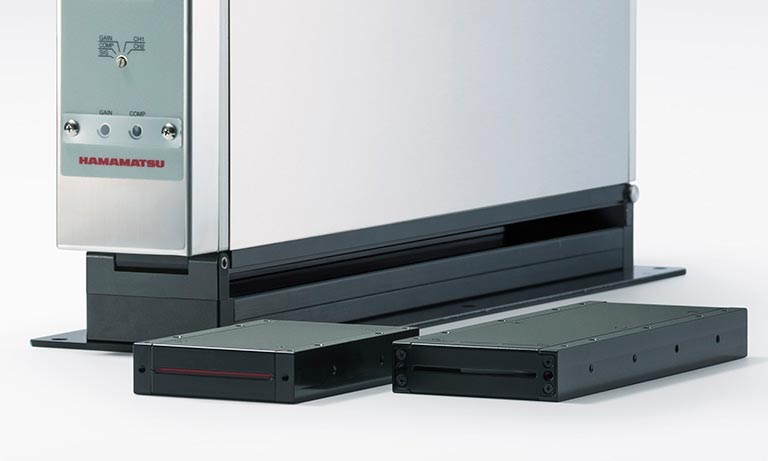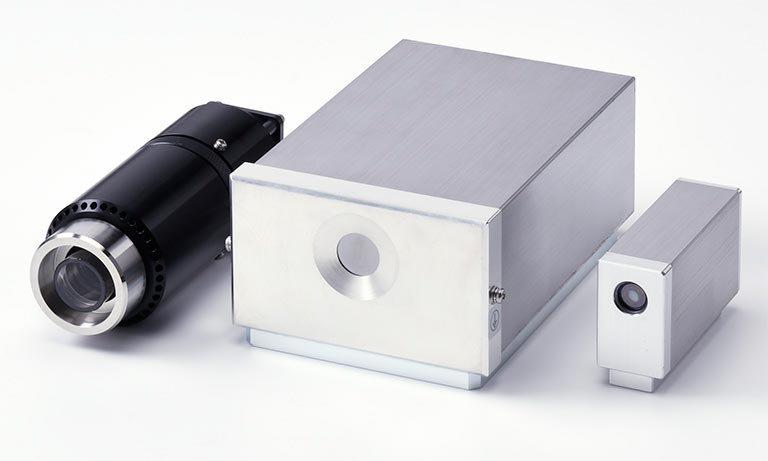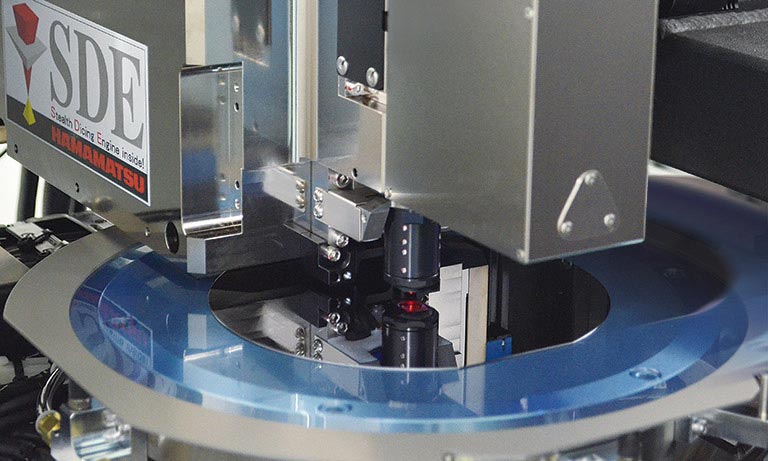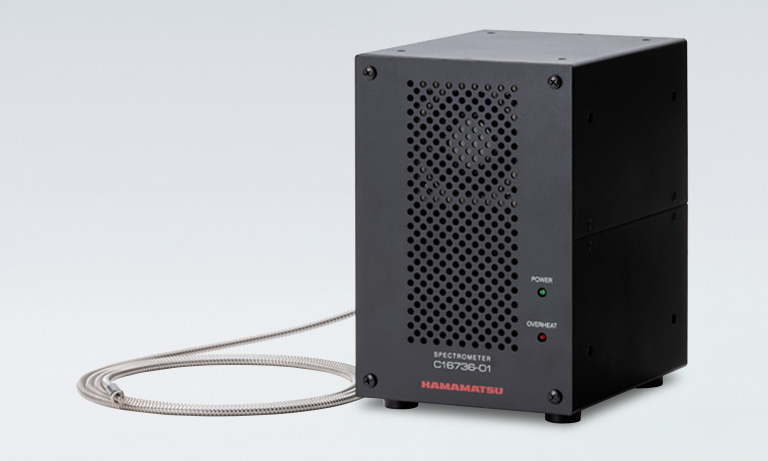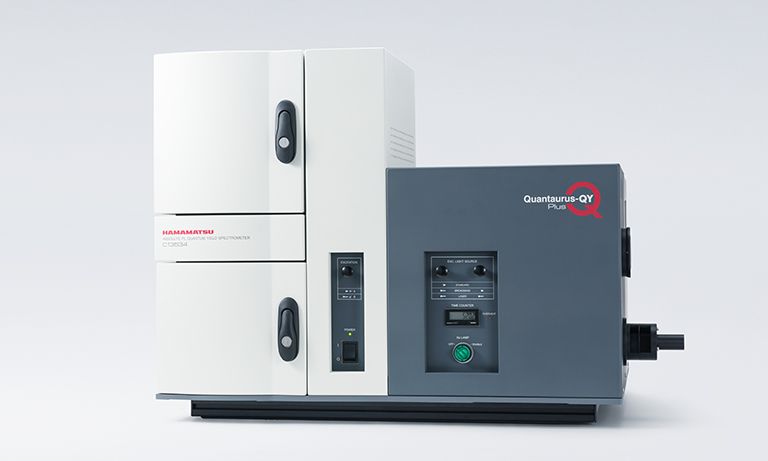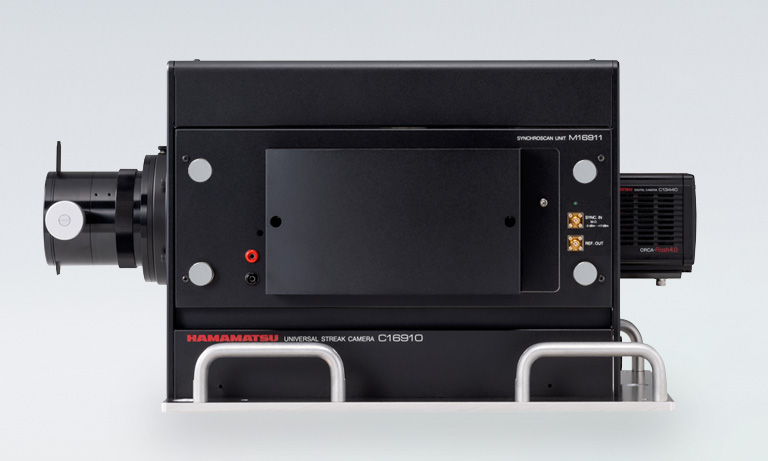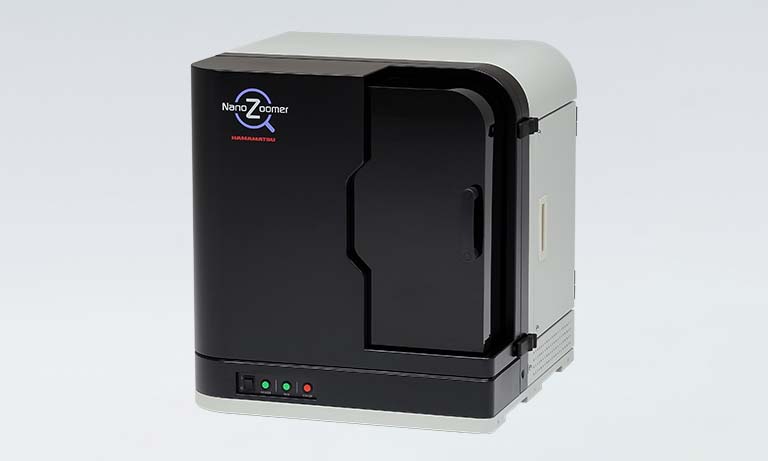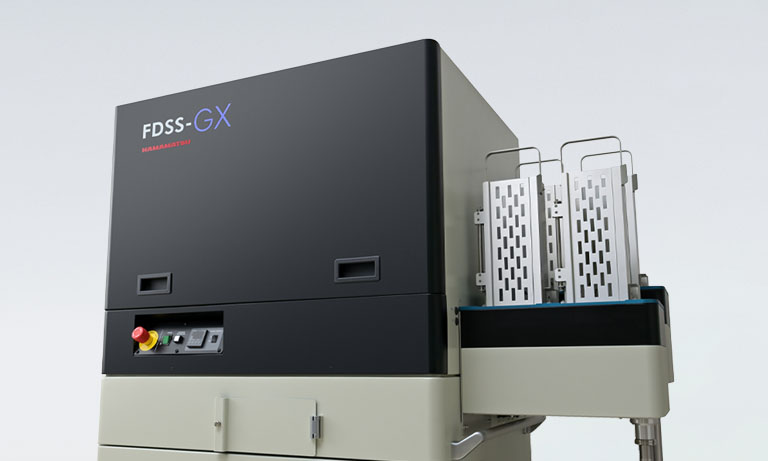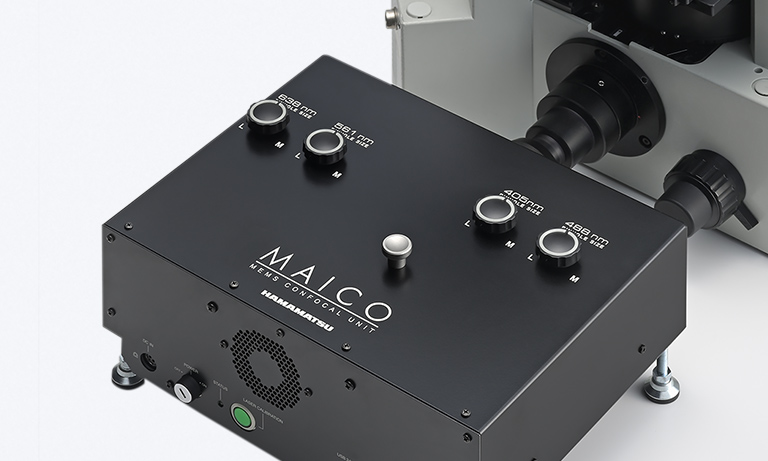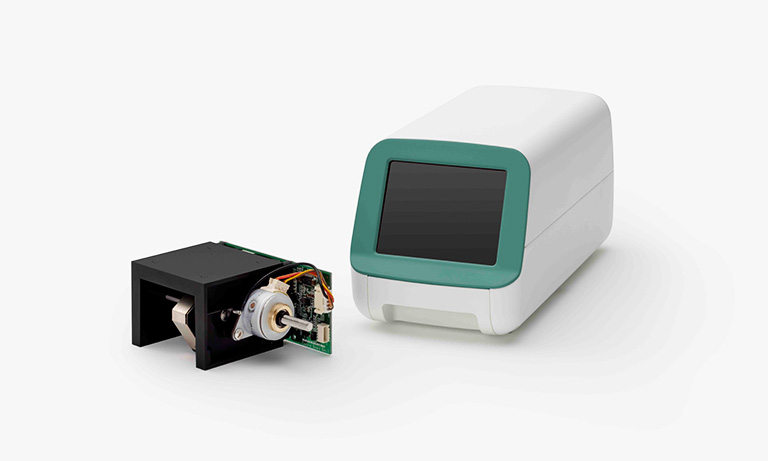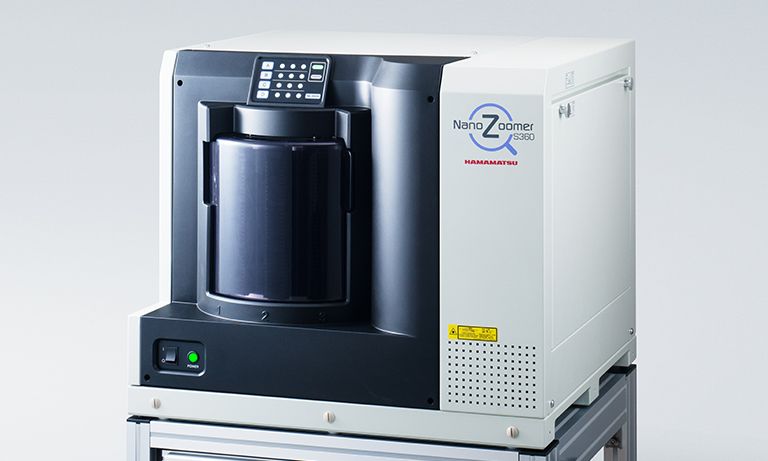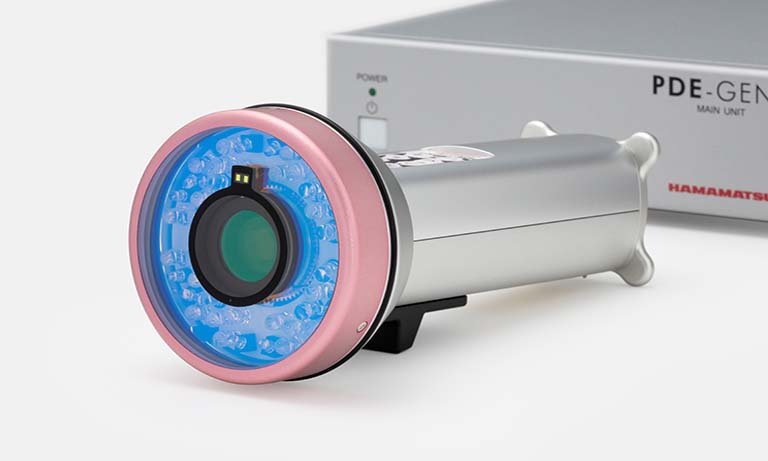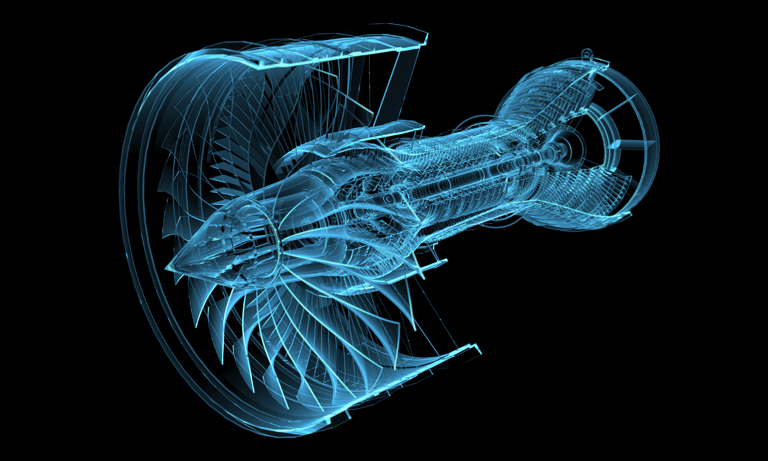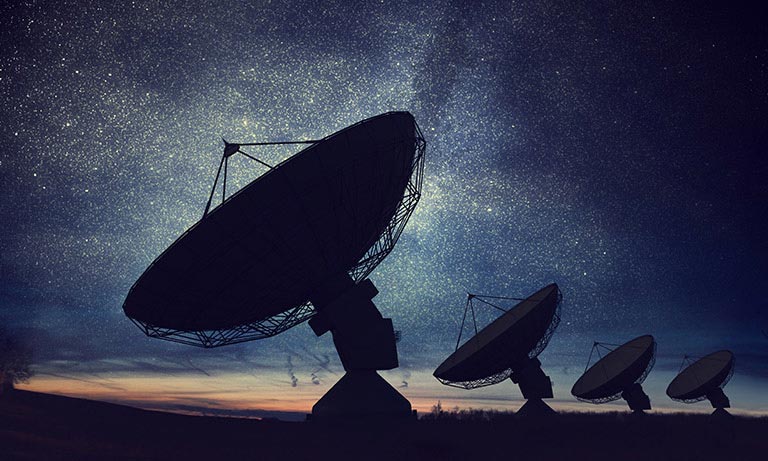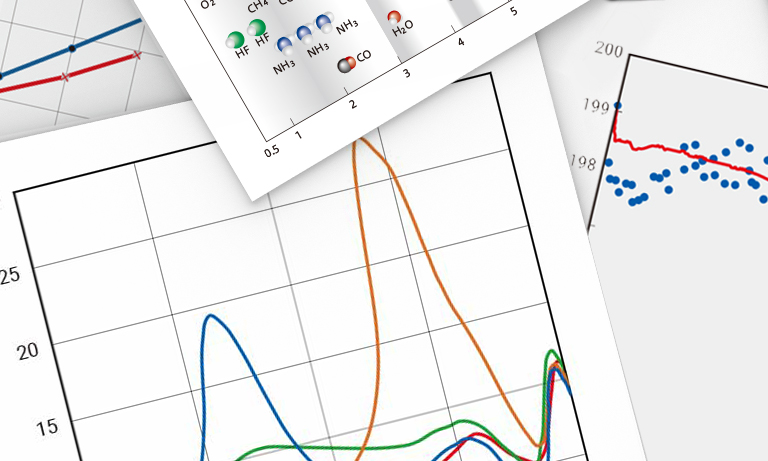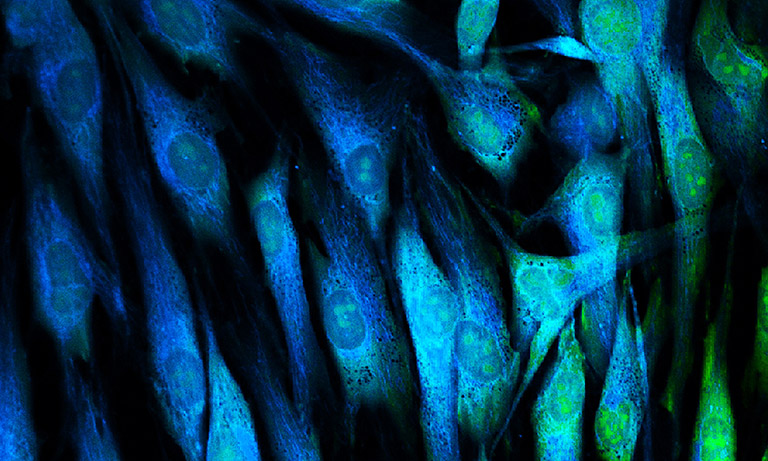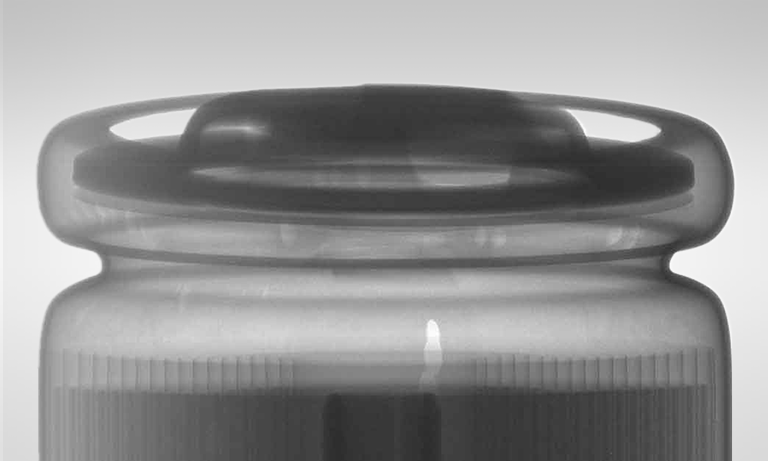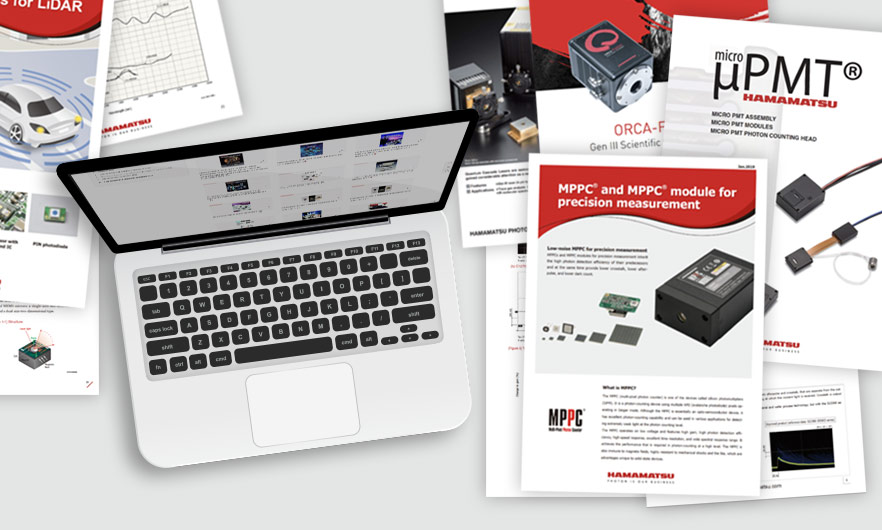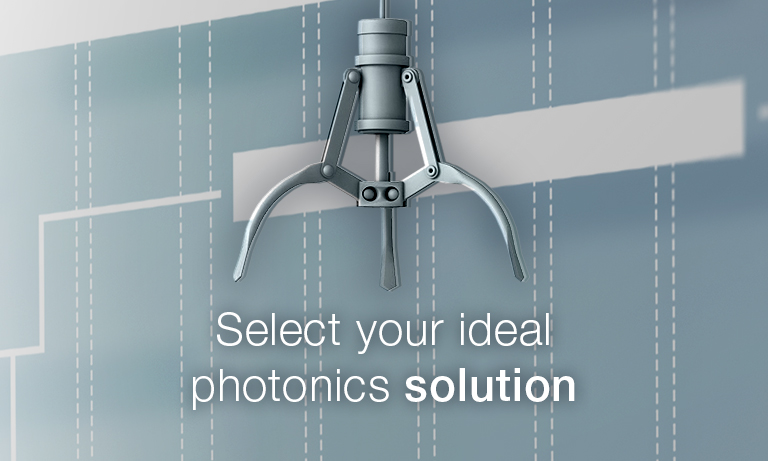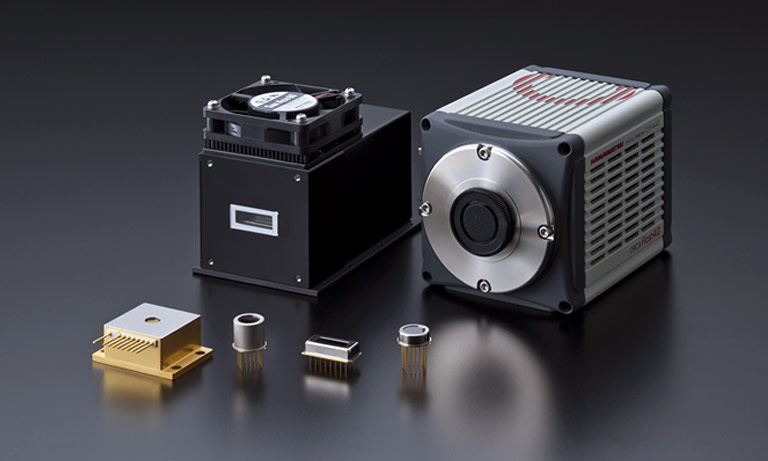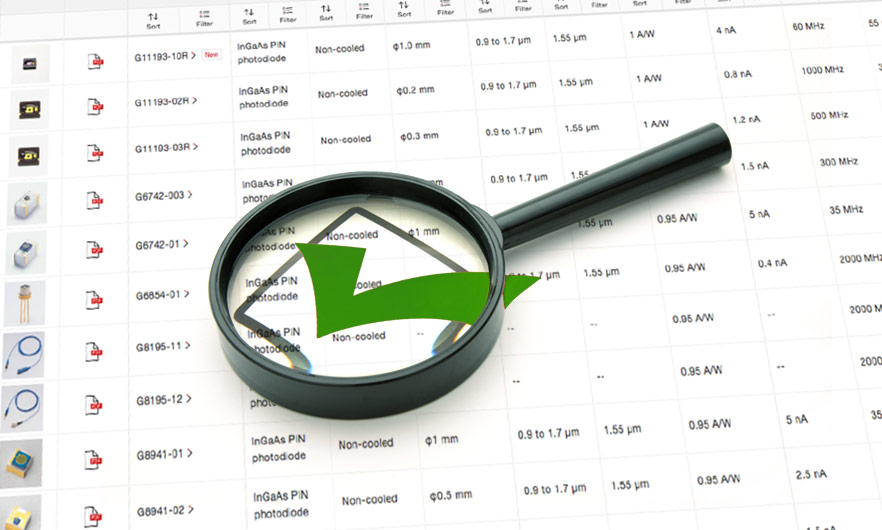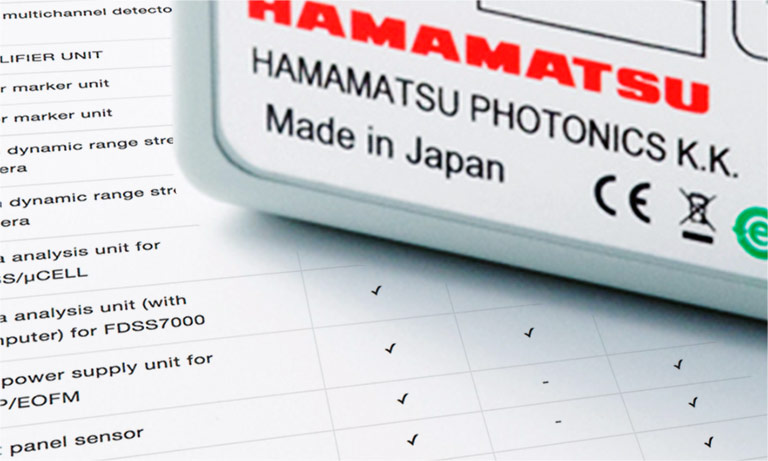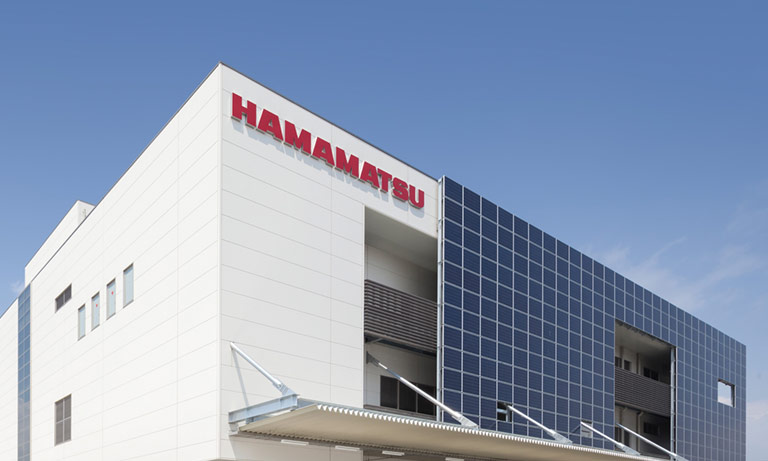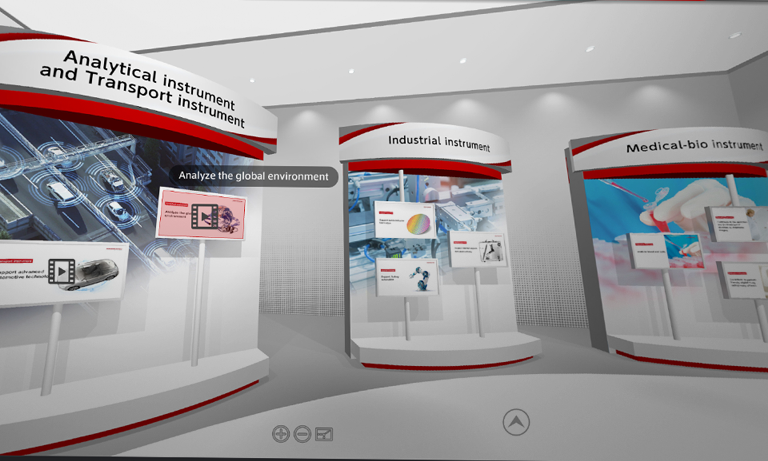United Kingdom (EN)
Select your region or country.
Holographic laser material processing
Spatial light modulator and holograms
By controlling the phase spatially, it becomes possible to control light diffraction and interference phenomena, and to form an arbitrary light intensity distribution with high light utilization efficiency. The phase distribution for generating such an arbitrary light intensity distribution with LCOS-SLM can be calculated. This is called Computer Generated Hologram (CGH) and can be calculated easily by a computer. Compared to a general projector that adjusts the light intensity by transmittance of light, the holographic beam forming technology using CGH is a technique that skillfully uses the interference effect of light without light loss. This technology is particularly effective for laser processing with strong incident light intensity. In general projectors, light is often converted into heat where light is blocked, which may directly affect the lifetime of the processing machine. In holographic beam shaping, this thermal conversion effect is small, high-intensity light can be used. In addition, since the light collected by the lens can be split into multiple beams, high-precision and high-throughput processing can be realized, and construction of a system that qualitatively changes productivity in the manufacturing industry is also expected.
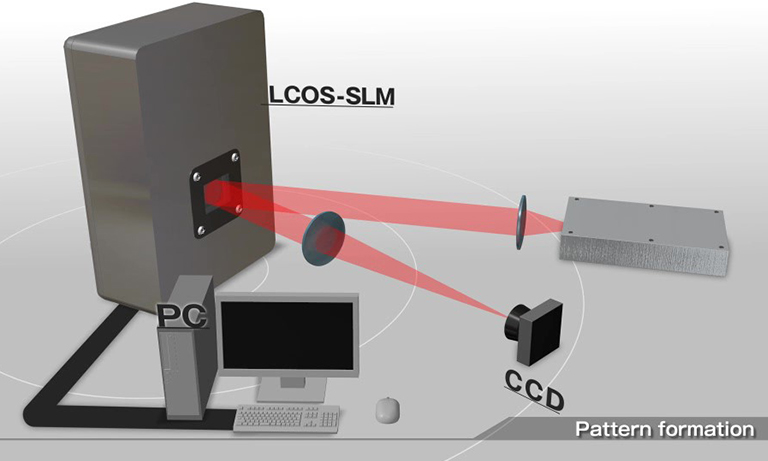
Fully automatic laser marking to innovate production line
By capturing the position of the red laser with a high-speed camera and displaying the hologram calculated based on the position information on the spatial light modulator, the pattern generated by the green laser can be displayed on the red laser.
Development of a system that can capture lasers at appropriate directions and positions at high speed by extracting feature quantities and applying feedback is expected, particularly when processing objects with curved surfaces flow through the production line in various directions.
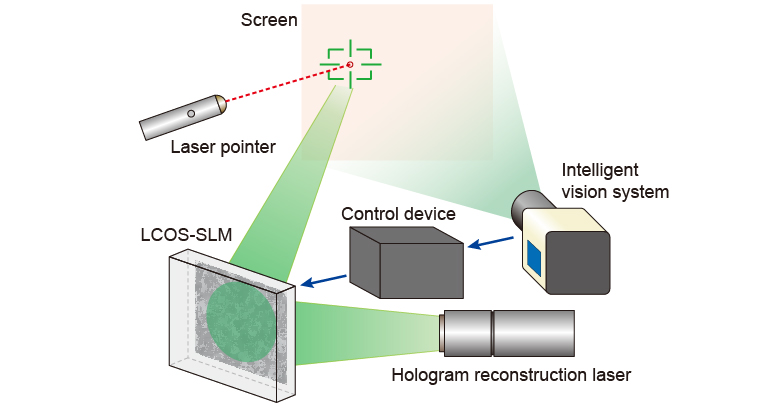
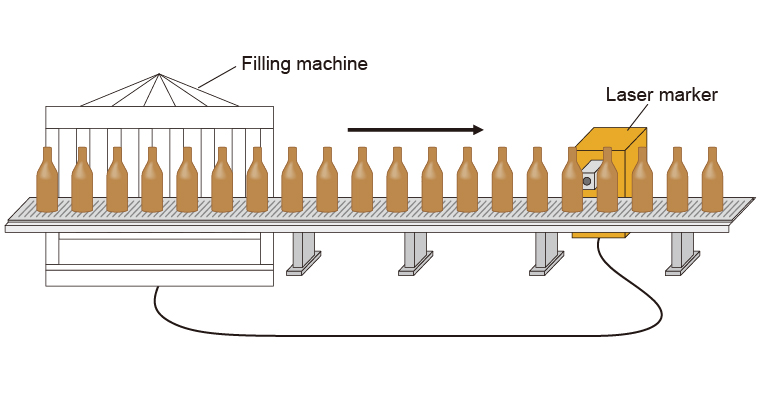
Irradiation of marking laser to objects on assembly line
Combination of LCOS-SLM technology and high-speed sensing ~Laser tracking~
Stealth dicing and towards high precision
The Stealth Dicing ™ process is a dicing method that uses a pulsed laser to perform high-quality division by processing the inside of the wafer. In semiconductor manufacturing, wafers have become larger in size, but their thickness has become very thin. How many devices can be cut from a single wafer without loss, or how can a high-performance integrated circuit be cut without damaging the dicing process, the smaller the end product becomes, the higher the performance of this method will be required. In this technology, it is necessary to focus the laser beam inside the wafer with high accuracy in order to extend the crack. However, since silicon, which is a general wafer material, has a high refractive index, if there is an interface between the air and the silicon material during focusing, the laser focusing characteristics deteriorate due to spherical aberration will be occurred. Therefore, by installing LCOS-SLM, it becomes possible to correct spherical aberration, and the same correction can be realized even if the wafer material changes.
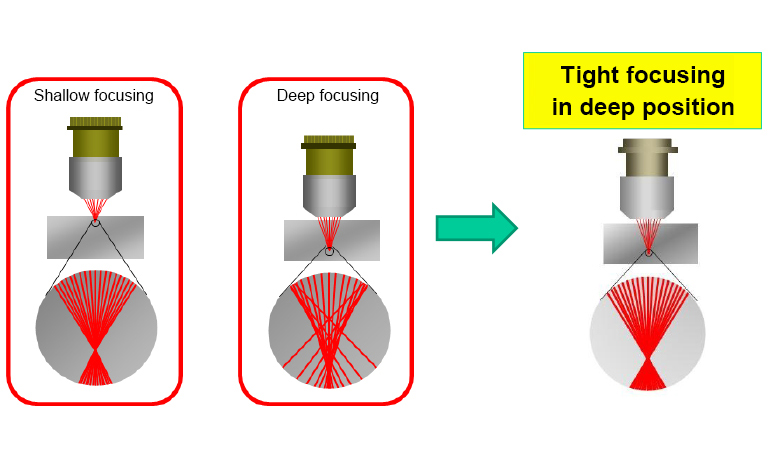
Publications
- E. Ohmura et al., "Internal modified-layer formation mechanism into silicon with nanosecond laser", Journal of Achievements in Materials and Manufacturing Engineering 17, 381(2006).
- M. Kumagai et al., "Advanced Dicing Technology for Semiconductor Wafer - Stealth Dicing", IEEE Transactions on Semiconductor Manufacturing 20, 259(2007).
- E. Ohmura et al., "Analysis of Processing Mechanism in Stealth Dicing for Ultra Thin Silicon Wafer", Journal of Advanced Mechanical System Design, Systems, and Manufacturing 2(4), 540(2008).
- Yu Takiguchi, Taro Ando, Yoshiyuki Ohtake, Takashi Inoue, Haruyoshi Toyoda, “Effects of dielectric planar interface on tight focusing coherent beam: direct comparison between observations and vectorial calculation of lateral focal patterns”, Journal of the Optical Society of America A 12/2013; 30(12):2605-10.
- Yu Takiguchi, Masaki Oyaizu, Makoto Nakano, Takashi Inoue, Haruyoshi Toyoda, "Suppression of backside damage in nanosecond internal-focusing pulse laser dicing with wavefront modulation," Optical Engineering 56(7), 077109 (2017)
- Confirmation
-
It looks like you're in the . If this is not your location, please select the correct region or country below.
You're headed to Hamamatsu Photonics website for GB (English). If you want to view an other country's site, the optimized information will be provided by selecting options below.
In order to use this website comfortably, we use cookies. For cookie details please see our cookie policy.
- Cookie Policy
-
This website or its third-party tools use cookies, which are necessary to its functioning and required to achieve the purposes illustrated in this cookie policy. By closing the cookie warning banner, scrolling the page, clicking a link or continuing to browse otherwise, you agree to the use of cookies.
Hamamatsu uses cookies in order to enhance your experience on our website and ensure that our website functions.
You can visit this page at any time to learn more about cookies, get the most up to date information on how we use cookies and manage your cookie settings. We will not use cookies for any purpose other than the ones stated, but please note that we reserve the right to update our cookies.
1. What are cookies?
For modern websites to work according to visitor’s expectations, they need to collect certain basic information about visitors. To do this, a site will create small text files which are placed on visitor’s devices (computer or mobile) - these files are known as cookies when you access a website. Cookies are used in order to make websites function and work efficiently. Cookies are uniquely assigned to each visitor and can only be read by a web server in the domain that issued the cookie to the visitor. Cookies cannot be used to run programs or deliver viruses to a visitor’s device.
Cookies do various jobs which make the visitor’s experience of the internet much smoother and more interactive. For instance, cookies are used to remember the visitor’s preferences on sites they visit often, to remember language preference and to help navigate between pages more efficiently. Much, though not all, of the data collected is anonymous, though some of it is designed to detect browsing patterns and approximate geographical location to improve the visitor experience.
Certain type of cookies may require the data subject’s consent before storing them on the computer.
2. What are the different types of cookies?
This website uses two types of cookies:
- First party cookies. For our website, the first party cookies are controlled and maintained by Hamamatsu. No other parties have access to these cookies.
- Third party cookies. These cookies are implemented by organizations outside Hamamatsu. We do not have access to the data in these cookies, but we use these cookies to improve the overall website experience.
3. How do we use cookies?
This website uses cookies for following purposes:
- Certain cookies are necessary for our website to function. These are strictly necessary cookies and are required to enable website access, support navigation or provide relevant content. These cookies direct you to the correct region or country, and support security and ecommerce. Strictly necessary cookies also enforce your privacy preferences. Without these strictly necessary cookies, much of our website will not function.
- Analytics cookies are used to track website usage. This data enables us to improve our website usability, performance and website administration. In our analytics cookies, we do not store any personal identifying information.
- Functionality cookies. These are used to recognize you when you return to our website. This enables us to personalize our content for you, greet you by name and remember your preferences (for example, your choice of language or region).
- These cookies record your visit to our website, the pages you have visited and the links you have followed. We will use this information to make our website and the advertising displayed on it more relevant to your interests. We may also share this information with third parties for this purpose.
Cookies help us help you. Through the use of cookies, we learn what is important to our visitors and we develop and enhance website content and functionality to support your experience. Much of our website can be accessed if cookies are disabled, however certain website functions may not work. And, we believe your current and future visits will be enhanced if cookies are enabled.
4. Which cookies do we use?
There are two ways to manage cookie preferences.
- You can set your cookie preferences on your device or in your browser.
- You can set your cookie preferences at the website level.
If you don’t want to receive cookies, you can modify your browser so that it notifies you when cookies are sent to it or you can refuse cookies altogether. You can also delete cookies that have already been set.
If you wish to restrict or block web browser cookies which are set on your device then you can do this through your browser settings; the Help function within your browser should tell you how. Alternatively, you may wish to visit www.aboutcookies.org, which contains comprehensive information on how to do this on a wide variety of desktop browsers.
5. What are Internet tags and how do we use them with cookies?
Occasionally, we may use internet tags (also known as action tags, single-pixel GIFs, clear GIFs, invisible GIFs and 1-by-1 GIFs) at this site and may deploy these tags/cookies through a third-party advertising partner or a web analytical service partner which may be located and store the respective information (including your IP-address) in a foreign country. These tags/cookies are placed on both online advertisements that bring users to this site and on different pages of this site. We use this technology to measure the visitors' responses to our sites and the effectiveness of our advertising campaigns (including how many times a page is opened and which information is consulted) as well as to evaluate your use of this website. The third-party partner or the web analytical service partner may be able to collect data about visitors to our and other sites because of these internet tags/cookies, may compose reports regarding the website’s activity for us and may provide further services which are related to the use of the website and the internet. They may provide such information to other parties if there is a legal requirement that they do so, or if they hire the other parties to process information on their behalf.
If you would like more information about web tags and cookies associated with on-line advertising or to opt-out of third-party collection of this information, please visit the Network Advertising Initiative website http://www.networkadvertising.org.
6. Analytics and Advertisement Cookies
We use third-party cookies (such as Google Analytics) to track visitors on our website, to get reports about how visitors use the website and to inform, optimize and serve ads based on someone's past visits to our website.
You may opt-out of Google Analytics cookies by the websites provided by Google:
https://tools.google.com/dlpage/gaoptout?hl=en
As provided in this Privacy Policy (Article 5), you can learn more about opt-out cookies by the website provided by Network Advertising Initiative:
http://www.networkadvertising.org
We inform you that in such case you will not be able to wholly use all functions of our website.
Close
